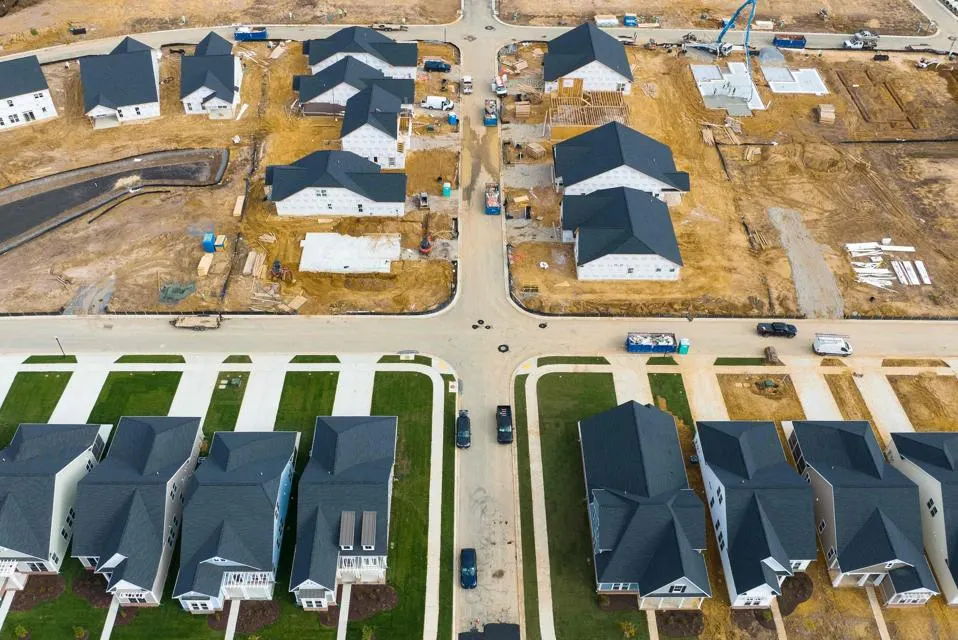Quiet Quitting US Housing Market You may have heard about the current state of the US housing market being described as “quiet quitting”. This term refers to a phenomenon where homeowners are choosing not to sell their properties, despite having sufficient equity, and instead are staying put in their homes for longer periods of time.
This has resulted in a lack of inventory in the real estate market, making it more difficult for buyers to find their dream homes. In this guide, we will explore what exactly is causing this trend and how it may impact the housing market in the future.
Introduction to Quiet Quitting US Housing Market
To understand quiet quitting in the US housing market, it’s important to first understand the concept of inventory. Inventory refers to the amount of homes available for sale at any given time.
In a balanced real estate market, there is typically a 6-month supply of inventory, meaning that if no new homes were listed for sale, it would take six months for all current listings to be sold. In recent years, the US housing market has seen a steady decline in inventory levels, with some cities experiencing less than a 2-month supply.
What is Causing Quiet Quitting?
There are several factors that have contributed to the current state of quiet quitting in the US housing market. One major factor is the lack of new construction. Since the Great Recession, there has been a shortage of new homes being built, resulting in a stagnant supply of inventory. This can be attributed to several factors such as high construction costs, labor shortages, and strict building regulations.
Another factor is the rise in home prices. As home values continue to increase, many homeowners are choosing not to sell their properties because they fear they won’t be able to afford a comparable home in the current market. This creates a domino effect, causing even fewer homes to be listed for sale.
Why are homeowners choosing to stay put?
There are a few factors that are contributing to the quiet quitting trend in the US housing market. One major factor is the current low mortgage interest rates. Many homeowners with existing mortgages are hesitant to sell their homes and purchase new ones with potentially higher mortgage rates. This has led to a decrease in housing turnover, meaning fewer homes are being sold on the market.
Impact on the housing market
The lack of inventory in the real estate market has caused an increase in home prices due to high demand and low supply. This can be frustrating for potential homebuyers, especially first-time buyers who may struggle to afford a home in this competitive market. Additionally, the quiet quitting trend is also causing a slowdown in the overall pace of home sales.
Potential long-term effects
The quiet quitting trend could have lasting impacts on the US housing market. If homeowners continue to stay put and not sell their homes, there will be even fewer homes available for sale in the future. This could lead to an even more competitive market with higher home prices and longer wait times for buyers. It could also make it more difficult for younger generations to enter the real estate market and achieve homeownership.
Is there a solution?
Some experts suggest that building more affordable housing could help alleviate the current shortage of homes on the market. This would not only provide more options for buyers, but potentially encourage existing homeowners to sell their properties and move into newer, more affordable homes. However, this solution may take time to implement and may not completely solve the issue.
Quiet Quitting US Housing Market Benefits
As homeowners choose to stay in their current homes, they may also be able to take advantage of rising home prices and build equity. This can provide financial stability and potentially increase wealth for those who are able to hold onto their properties.
Additionally, the overall stability of the housing market can benefit from a slower pace of home sales, avoiding any potential bubbles or crashes. However, this also means that the market may not be as accessible for first-time buyers or those looking to upgrade their homes.
Service industries also impacted
The quiet quitting trend not only affects the housing market, but also has ripple effects on related service industries such as real estate agents, mortgage lenders, and home renovation businesses. With fewer home sales and a smaller pool of potential buyers, these industries may see a decrease in demand for their services. This could lead to job losses and economic impacts in these sectors.
Possible solutions
In addition to building more affordable housing, other potential solutions to the quiet quitting trend could include government incentives for older homeowners to downsize or sell their properties, creating more opportunities for younger buyers.
Another approach could be increasing wages and job security for younger generations, making it easier for them to save for a down payment and afford a home. Ultimately, a combination of approaches may be necessary to address the quiet quitting trend and create a more balanced housing market.
Conclusion
While the quiet quitting trend may have some benefits for current homeowners, it also presents challenges for the overall health and accessibility of the US housing market. Finding solutions to this trend will require collaboration between government policies, industries, and individuals.
By addressing these issues, we can create a housing market that is stable, inclusive, and sustainable for all. So let’s keep the conversation going and continue to work towards a better future for our housing market.
Read more: Where Can I Find a Dollar Tree Near Me?






























